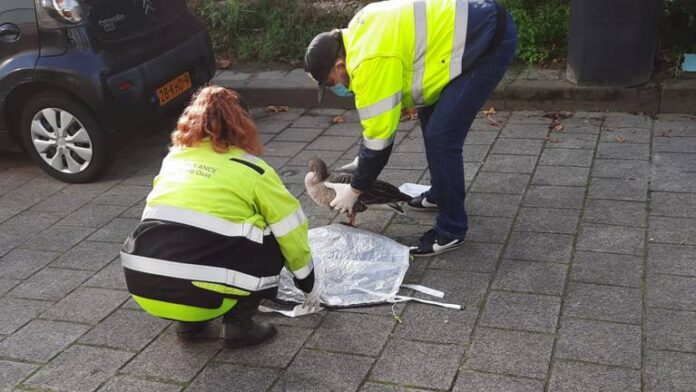The Animal Ambulance Brabant Noord-Oost is flooded with reports of bird flu. According to Rens van Lieshout of the Animal Ambulance, there are hundreds of reports per day. The foundation has to pull out dozens of times a day. A bird may be infected by the deadly disease.
According to Van Lieshout, the situation is serious. The majority of his reports are from the area around the river Maas and from larger places like Den Bosch. The Maas area has many waterfowl, whereas tthe city is home to mainly pigeons and songbirds.
The Animal Ambulance generally handles a large part of the calls by giving advice. If the animals are already dead, the ambulance does not come. It is the task of the municipality to clean up dead birds.
Weird symptoms
According to van Lieshout, it easy to tell whether birds have avian flu or not. “They show weird symptoms. They are unstable, turn their heads, are disoriented, and you can usually approach them. This is abnormal bird behaviour, as they commonly shy away from people.”
If the ambulance does arrive, the employees adhere to a protocol for bird flu. For example, there is a special ’emergency ambulance’. It is specially equipped for the transport of animals with bird flu. The animals then go to the nearest veterinarian, who puts them to sleep. The Brabant-Noordoost Animal Ambulance operates in nineteen Brabant municipalities and part of the south of Gelderland.
Seasonal or permanent?
“It’s worse than usual,” says Van Lieshout. Usually, the numbers are seasonal. In the spring, it’s young birds and ducklings that are affected, whereas in autumn it’s large groups of migrant birds.
However, bird flu has been prevalent in the country for a year now. This is unique, since the virus usually disappears in the summer, only to reappear later in the year. This year there seems to be no end to the bird flu wave and the nationwide instruction to keep poultry inside. This measure has been in force again since the beginning of this month. Only recently 25,000 laying hens were culled in Neerkant.
Regional differences
It is striking that the Animal Ambulance in West Brabant receives hardly any reports of bird flu. They get the odd call. “And not even every week”, says a spokesman. According to Van Lieshout, this can be explained by the fact that there is more bird flu in some areas than in other places. “We have had outbreaks here recently and there is also a transport ban” *.
* The transport ban forbids the transport of poultry in areas where outbreaks of bird flu have occurred on poultry farms. So more wild birds are affected in areas with a heavy poultry industry, such as south-east Brabant. (ed. Greta)
Source: Omroep Brabant
Translated by: Shanthi Ramani
Edited by Greta











